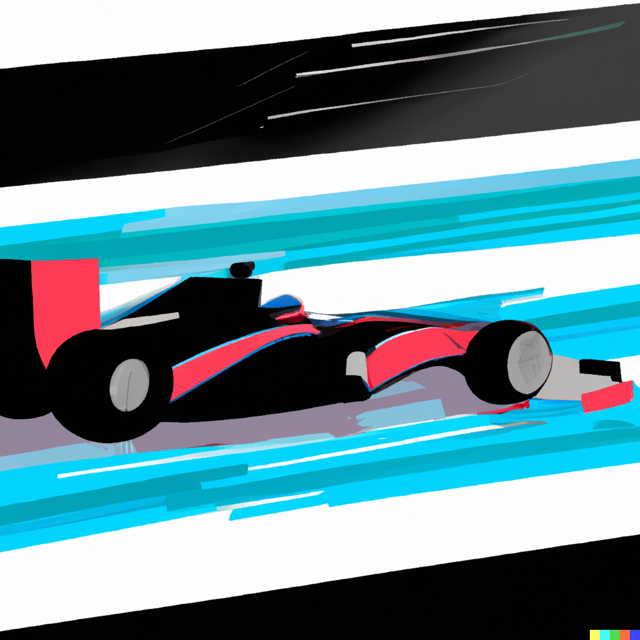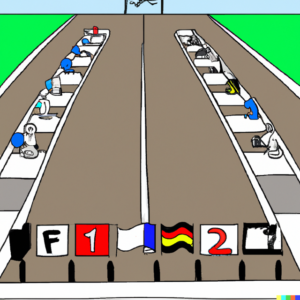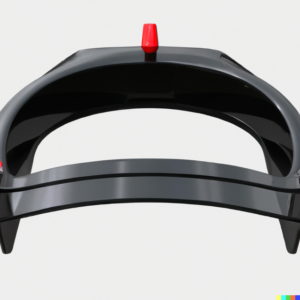How Fast Do Formula 1 Cars Go

Anyone that has ever seen a Formula 1 race knows that the cars travel so fast that they seem like a blur. This may have got you wondering: how fast do Formula 1 cars go?
Formula 1 cars can typically reach speeds up to 224 mph. However, they can also exceed this speed. The highest speed ever reached in a Formula 1 race was 231.4 mph, achieved by Valtteri Bottas in the 2016 Mexican Grand Prix.
Read on to find out more about the factors that determine the speed of Formula 1 cars, as well as the fastest tracks in the Formula 1 circuit.
How Fast Are Formula 1 Cars?
Formula 1 cars can reach ridiculous speeds, what’s just as impressive is how quickly they can reach them.
These marvels of engineering and technology can go from 0 to 60 mph in as little as 2.6 seconds. Technically, the top speed that these cars can reach is 224 mph. However, they have proven to be capable of even higher speeds than that.
Some cars in other motorsports are faster than Formula 1 cars when going in a straight line. However, they pale in comparison to Formula 1 cars when it comes to turning corners at high speeds.
Formula 1 cars can turn a corner at a staggering speed of 186 mph. To put this mind-boggling figure into perspective, most commercially available cars can’t even reach this speed when going straight.
What Is Their Average Speed?
Even though Formula 1 cars can reach speeds well over 200 mph, this doesn’t mean that drivers are able to go at full speed around the track for an entire race. This is because the tracks have curves that drivers have to slow down a bit to maneuver.
Therefore, the average speed of a Formula 1 car in an official race is “only” 113 mph.
What Determines Their Top Speed?
The ability of Formula 1 cars to reach such astounding speeds is no fluke. These cars are meticulously designed to move as fast as possible while still complying with the Fédération Internationale de l’Automobile (FIA) regulations.
These regulations are often tweaked before the start of each Formula one season. Therefore, teams have to adapt by tweaking the designs of their cars and remain competitive.
Here are some of the factors considered when Formula 1 cars are being designed:
The Engine
Let’s start with the obvious. Formula 1 cars are able to travel at such blazing speeds thanks in large part to their incredibly powerful engines.
The engine used in Formula 1 cars is a 1.6 liter, four-stroke, turbocharged one. This beast of an engine produces 1050 horsepower!
Aerodynamics
Another crucial factor that goes into the design of Formula 1 cars is making them as aerodynamic as possible.
This is arguably the most important consideration in a Formula 1 car’s design, which is why teams spend exorbitant amounts of money on perfecting their cars’ aerodynamics.
Formula 1 cars are supremely aerodynamic. This means that the way they’re shaped allows the wind to seamlessly slide off of them as opposed to obstructing their forward motion.
The effect of Formula 1 cars being designed this way is twofold.
Firstly, it significantly lessens the effect the force of air resistance has on them in terms of slowing them down.
Additionally, the aerodynamic shape of Formula 1 cars allows them to generate a strong downforce.
This force acts to push the tires into the ground as the car moves. In turn, the tires have more traction which enables the car to make use of its beast of an engine to its fullest potential.
This downforce is also the secret behind the ability of Formula 1 cars to turn corners at such high speeds.
Weight of the Car
In the words of Isaac Newton, the lighter an object is, the smaller the force required to cause it to accelerate.
Formula 1 teams have definitely taken Newton’s law to heart. This is evidenced in their endless attempts to minimize the weight of their cars in every way possible.
They do so by crafting the body of their cars out of lightweight materials such as carbon fiber, which combines durability and high strength with low weight.
Additionally, the internal components of Formula 1 cars such as their steering wheels and chairs are designed to weigh as little as possible.
According to the new FIA regulations, Formula 1 cars must weigh no more than 1995 lbs and have a minimum weight of 1760 lbs.
Some Formula 1 teams have taken extreme measures such as peeling the paint of their cars to try to reach that minimum weight and gain an edge.
Weight of the Driver
Just as the weight of the car has a significant effect on its speed, so does the weight of the driver.
This is why Formula 1 drivers have to be in excellent shape. If a driver gains even one pound, this can affect the speed of the car, and in turn, worsen his lap time.
Formula one drivers also need to have incredible core strength to be able to withstand the substantial G-force they’re subjected to when traveling at such high speeds.
What Is the Fastest Track?
The title of the fastest track in the Formula 1 circuit definitely belongs to the Baku Street Circuit. This track allows drivers to show off their cars’ maximum speed thanks to the 1.4-mile straight it contains.
As a result, drivers can reach a maximum speed of 220 mph on this track. The Monza circuit also has a long straight that allows drivers to break the 210 mph barrier.
Records For Fastest Speed Reached
The fastest speed ever reached during an official Formula 1 competition is 231.4 mph. This jaw-dropping record was achieved by Valtteri Bottas of the Williams team during the 2016 Mexican Grand Prix.
However, this isn’t the highest recorded speed for a Formula 1 car, it’s just the highest speed reached by a car in a Formula 1 race.
The highest speed ever recorded was 246.9 mph, this incredible feat was reached by Honda in 2006.
They set out to try to exceed a speed of 248 mph at the Bonneville Salt Flats in Utah, and they got very close, setting the aforementioned record in the process.
Conclusion
If you’ve just started following Formula 1, you may be wondering how fast Formula 1 cars go.
The answer is that Formula 1 cars are some of the fastest land vehicles on the planet. They can reach staggering speeds up to 247 mph when traveling in a straight line.
However, these speeds aren’t reached in Formula 1 races. This is because the tracks that drivers compete in have several curves and corners. In turn, this forces the drivers to slow down in order to turn these corners.
They don’t slow down much though, Formula 1 cars can turn corners at a ridiculous speed of 186 mph.
The reason why Formula 1 cars can travel at such high speeds revolves around several factors. These factors include the cars’ powerful engines, their aerodynamic design, and the efforts of teams to minimize the cars’ weight.





